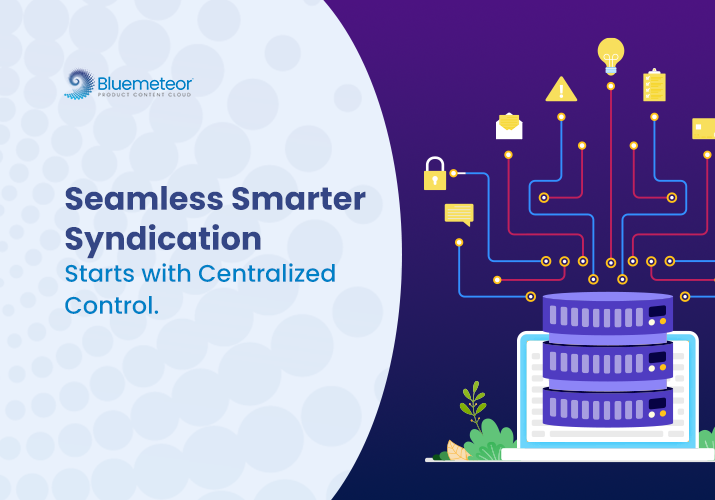Reinforcing Brand Loyalty through Data: How PIM Helps Brand Managers Connect with Customers

In this blog, we delve into the significant role that Product Information Management (PIM) systems play in enhancing brand loyalty. We explore how brand managers can utilize data-driven insights from PIM to connect more effectively with their customers, thereby fostering lasting relationships. The blog covers the importance of data in understanding customer behavior, personalizing marketing strategies, and maintaining a consistent brand message across various platforms. It concludes with actionable insights for brand managers looking to leverage PIM in their branding strategies.
Boosting Brand Loyalty with PIM
In today’s fast-paced digital marketplace, brand loyalty is more crucial than ever. Customers have a plethora of choices at their fingertips, making it essential for brands to stand out and create meaningful connections with their audience. That’s where Product Information Management (PIM) systems come into play.
PIM isn’t just about keeping product data organized – it’s about leveraging that data to foster deeper customer relationships. By ensuring that accurate, consistent, and enriched product information is available across all touchpoints, PIM helps brand managers deliver personalized experiences that build trust, enhance satisfaction, and ultimately drive loyalty.
How PIM Helps Brand Managers Connect with Customers and Build Brand Loyalty
1. Understanding Customer Behavior
The foundation of brand loyalty lies in understanding customer behavior. PIM systems provide brand managers with comprehensive insights into customer preferences, purchase history, and interaction patterns.
By analyzing this data, brand managers can identify trends and anticipate customer needs, allowing for more targeted marketing efforts.
- Identifying Trends: With access to detailed data, brand managers can spot emerging trends in customer purchasing patterns. Which enables them to proactively respond to changes in the market.
- Anticipating Needs: By analyzing historical data, PIM systems help predict future customer needs. This allows managers to tailor offerings and marketing strategies that meet customer expectations.
- Targeted Marketing: With better customer data, brand managers can deliver more targeted promotions and marketing campaigns. This ensures they speak to the right people at the right time.
For instance, a brand manager at an industrial machinery company might use PIM data to discover a trend in demand for energy-efficient equipment. With this insight, the manager can focus marketing campaigns on these products, resonating with customers interested in sustainability and reinforcing brand loyalty.
2. Personalizing Marketing Strategies for Brand Loyalty
Personalization is key to building strong customer relationships. PIM systems enable brand managers to segment their audience based on various data points, such as demographics, purchasing behavior, and preferences.
This segmentation allows for the creation of highly personalized marketing strategies that speak directly to individual customers.
- Personalized Tailored Promotions: Rather than using a one-size-fits-all approach, PIM allows brands to craft special deals for specific customer groups. As a result, customers feel like the offers are designed just for them.
- Personalized Product Recommendations: By analyzing previous purchases and browsing behavior, brand managers can recommend products that are more likely to resonate with individual customers. This not only boosts engagement but also increases conversion rates.
- Dynamic Content Delivery: Moreover, PIM systems enable dynamic content delivery across multiple channels. Whether a customer is browsing a website, receiving an email, or checking social media, the content they encounter is tailored to their unique preferences.
For example, a construction tools brand could use PIM to send personalized product recommendations based on past purchases. By suggesting tools that align with a customer’s past behavior, the brand demonstrates understanding and care, strengthening customer loyalty.
3. Ensuring Consistent Brand Messaging
Consistency is another critical factor in maintaining brand loyalty. With multiple channels and platforms available, it’s vital that brands deliver a uniform message across all touchpoints.
PIM systems help ensure that product information and branding elements are consistent, regardless of where the customer encounters the brand.
- Same Experience Everywhere: Whether customers are online or in-store, PIM ensures they see the same prices, product details, and promotions.
- Accurate Information: PIM systems help avoid outdated or wrong product info, making sure customers always get the latest updates.
- Strong Brand Image: Consistent messages strengthen the brand’s identity, making it more recognizable and trusted by customers.
By maintaining a single source of truth for all product data, PIM systems allow brand managers to provide accurate and up-to-date information across websites, social media, and other customer-facing platforms. This consistency builds trust with customers. They can rely on receiving the same quality experience with every interaction.
4. Leveraging Data for Continuous Improvement
PIM systems are not static; they evolve with the brand and its customers. Brand managers can continuously leverage data from PIM systems to refine their strategies and improve customer engagement.
By regularly analyzing performance metrics and customer feedback, managers can identify areas for improvement and implement changes that enhance the overall customer experience.
- Performance Tracking: Brand managers can easily track how well product information is resonating with customers by analyzing metrics like click-through rates, conversions, and return rates.
- Customer Feedback Loop: By gathering and analyzing customer feedback related to product descriptions, availability, and delivery times, PIM systems enable managers to implement quick adjustments that improve the customer experience.
- Adapting to Market Trends: As markets evolve, PIM systems allow brand managers to swiftly adapt by making adjustments to product data, messaging, and marketing strategies. This ensures they stay ahead of customer expectations.
For instance, a manufacturer might notice through PIM data that a certain type of industrial valve is underperforming. Upon closer inspection, they may find that product descriptions or images are inadequate.
With this insight, the brand can update product information to improve sales and customer satisfaction.
Conclusion
Finally, reinforcing brand loyalty through data is an ongoing process that requires dedication and the right tools. Product Information Management systems provide brand managers with the insights and capabilities needed to connect with customers on a deeper level.
By understanding customer behavior, personalizing marketing strategies, and ensuring consistent messaging, brands can foster strong, lasting relationships with their customers.
Additionally, leveraging data for continuous improvement helps brands stay relevant and responsive to customer needs.
Bluemeteor Product Content Cloud further enhances this process by providing an integrated solution. It streamlines product data management, ensures data accuracy, and enables dynamic content delivery.
With Bluemeteor, brand managers can not only strengthen customer relationships but also build a resilient brand reputation that fosters long-term loyalty.




